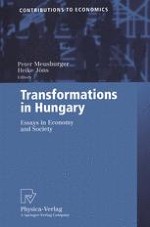2001 | OriginalPaper | Buchkapitel
Recent Differentiation Processes in Budapest’s Suburban Belt
verfasst von : Éva Izsák, Ferenc Probáld
Erschienen in: Transformations in Hungary
Verlag: Physica-Verlag HD
Enthalten in: Professional Book Archive
Aktivieren Sie unsere intelligente Suche, um passende Fachinhalte oder Patente zu finden.
Wählen Sie Textabschnitte aus um mit Künstlicher Intelligenz passenden Patente zu finden. powered by
Markieren Sie Textabschnitte, um KI-gestützt weitere passende Inhalte zu finden. powered by
Academic interest in the development of Budapest, a city whose history goes back to prehistoric times, has been kindled by its importance within the Hungarian urban network and by its potential emerging future role in the web of prime Euro-pean cities. Several disciplines, including many geographical studies, papers and monographs, deal with this issue, and some of them are written in German or Eng-lish (e.g. Friedrichs 1985; Enyedi and Szirmai 1992; Lichtenberger et al. 1994; Berényi and Dövényi 1996; Kovács and Wiessner 1997; Burdack and Herbert 1998). The major characteristics of the Hungarian capital that are relevant to the topic of this paper can be summarised as follows:Although Budapest as it is known today first came into existence in 1873 through the unification of three towns - Buda, Pest and Óbuda - its functional role as capital dates back to the thirteenth century. A series of favourable physical and socio-geographical factors played a part in the city’s growth and in the enrichment of its central functions. Their significance, however, has changed from time to time in accordance with the demands of differing historical conditions (Probáld 1997; table 1).
